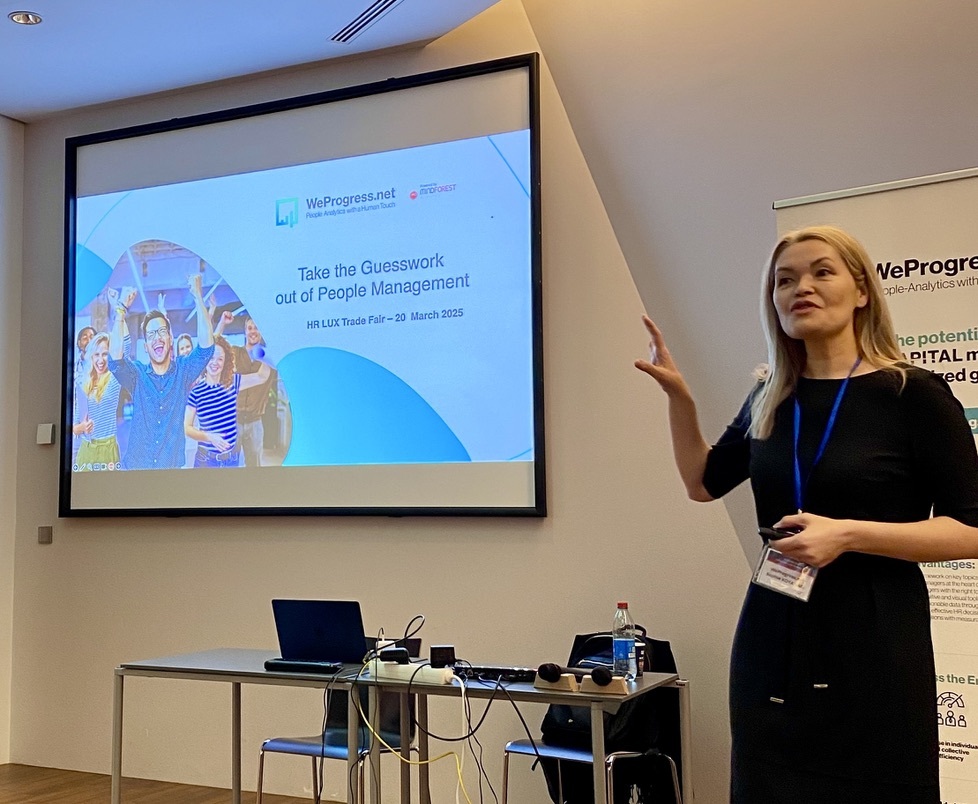Intelligence without ambition is a bird without wings
Intelligence without ambition is a bird without wings
This quote from Salvator Dali can be interpreted as follows: without ambition, a company will simply repeat its past, and will not be able to evolve. Defining your ambition means imagining what you want to become, projecting yourself, without any limits. It’s about translating a vision, a dream, showing a star to follow, a lighthouse in the night, to give all employees and management the desire to mobilise and surpass themselves to achieve a common goal. The desire to change.
Defining the change project
Before embarking on any change project, it is essential to define the why, the raison d’être of the project, which stems from the company’s ambition. This enables us to set a course, to mobilise employees around a strong, symbolic idea, a realistic objective that gives meaning to the project and brings us closer to our ambition. The initial ambition will then be followed by precise sub-objectives and the strategy for achieving them.
Alignment
Although the impetus for a change project is often provided by the CEO, it is essential that all Top Management is aligned around him, so that they become sponsors of the change project, on whom the project team and all employees can subsequently rely.
This ambition can be discussed at a workshop, for example. Several methods can be used, such as illustrating the concepts with photos, materialising them with LEGO® (LEGO® Serious Play®) bricks, or creating a magazine cover. This will help to make the ambition tangible, and so encourage its appropriation by the teams, and subsequently by all the employees. Next, the ambition that is concretised in the workshop needs to be understood, communicated and lived, and can be computer-generated and displayed on the company’s premises. And don’t forget that this will reveal something about the company and its project when it’s finished.
Asking the right questions
To bring the collective, co-created ambition to life, you first need to ask yourself the right questions to identify the major areas for change, as well as the potential obstacles and levers for transforming the company. This can be done, for example, during a workshop with top management, in order to reflect on the positive (and potentially negative) benefits:
– To the organisation? In terms of structure, operations, changes to processes?
– To employees? How will it affect their day-to-day lives? Will they need to develop new skills?
– To customers, suppliers and partners? Will the relationship be transformed? Will they change their contact person? Will certain processes affecting them be affected?
As well as providing fundamental information for internal and external communication on projects/ambitions, this exercise allows you to sit back and take a step back.
Translating ambition into concrete action
Establishing an ambition for your change project is certainly necessary, but it is not sufficient to ensure its success. The next step is to analyse the current situation and create an action plan to achieve the desired future situation. Ambition then becomes a guide for defining priorities and ensuring consistency between actions.
During the workshop, participants will be asked to define actions to ensure that the positive aspects are realised and that the negative aspects are avoided. It is also possible to reflect on certain possible risks, list them and plan concrete actions to limit them.
Once the actions have been listed, they are placed on a matrix which can contain a range of information, such as :
– The action and a short description of it
– A notion of time, with participants estimating when the action can be carried out (short term, medium term, long term, sometimes precise dates if the information is available)
– A person in charge, who will ensure that the action is carried out (either by himself, or by setting up a team, or by delegating, etc). It is also possible to define an entire RACI (Responsible, Accountable, Consulted, Informed).
– An assessment of the expected positive impact of the action and the effort required to implement it
Communicate
In order to become a reality, the ambition, the reasons for the change project and its raison d’être need to be understood and communicated regularly to all employees, which will also help to unite them around common objectives. It is also important to demonstrate the progress of the project and to reward the employees involved.
There are a number of ways of doing this:
– Presentations by top management to all employees
– Written communications, for example in the newsletter or on the intranet
– The use of posters, videos or gadgets.
– More specifically, for objectives and concrete actions, team meetings
– and so on.
Repeating the exercise
Of course, in a context where change is permanent, ambition is not a fixed image and this exercise will have to be carried out regularly. So why not take this opportunity to organise an outdoor event, get out of the company, get to know your colleagues in a different way and strengthen ties by building plans together for the company of tomorrow?
Let us help you
WANT TO RECEIVE OUR LATEST THOUGHT LEADERSHIP CONTENT?
Related posts
 Take the Guesswork out of People Management
Take the Guesswork out of People Management
 From processes to people: achieving quality
From processes to people: achieving quality
 Daring to lead Positive Transformation: What if Positive Emotional Capital was your key to sustainable change?
Daring to lead Positive Transformation: What if Positive Emotional Capital was your key to sustainable change?
 Why hire Change management professionals? We can do it alone!
Why hire Change management professionals? We can do it alone!
 Digital Transformation and Change Management: Lessons shared in an event hosted by Cebi and MindForest
Digital Transformation and Change Management: Lessons shared in an event hosted by Cebi and MindForest




